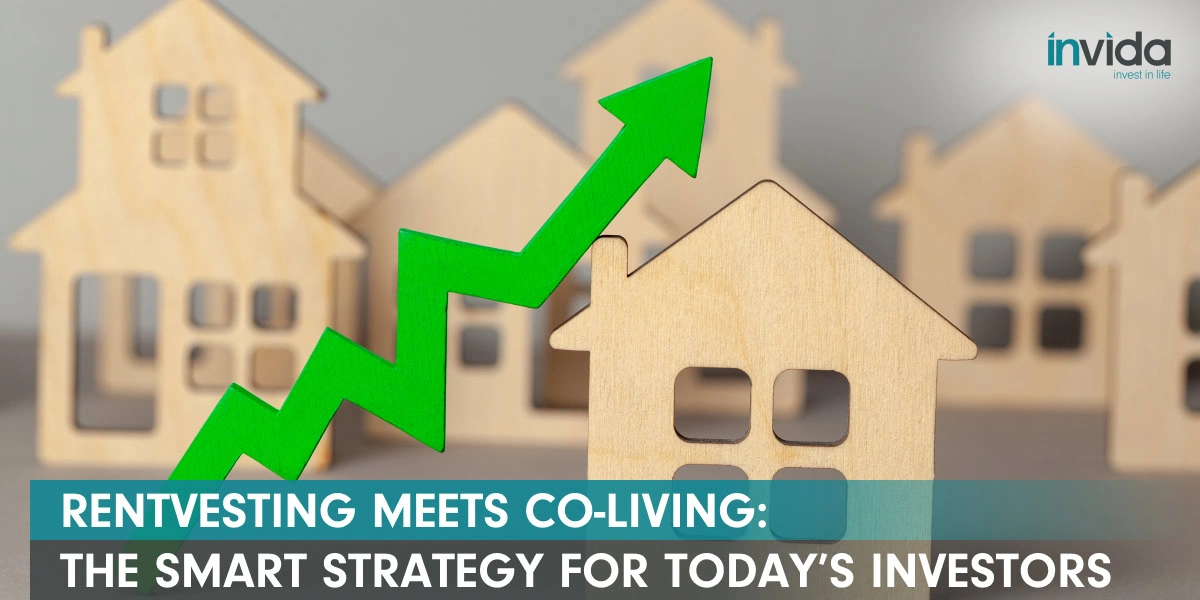Downsizing for retirement is a common path many Australians take to free up cash, reduce maintenance and simplify life. But what if you didn’t need to sell your home or move out, for that matter, to achieve those same financial and lifestyle benefits?
For today’s retirees, there’s a growing interest in a modern alternative: converting part of the family home into a co-living property. It’s a smart and flexible twist on the traditional retirement downsizing strategy. It offers retirees passive income, social connection and the comfort of staying exactly where you are.
Downsizing for Retirement and the Empty Nest Opportunity
After the kids move out, many retirees find themselves living in large homes that once made sense for a growing family. Now, with an “empty nest” and all that space, selling up and moving into a smaller place seems the logical choice.
For many, this move can be very daunting. Emotional attachment to a family home and strong ties to the local community make it difficult to sell. Add to that the hassle of relocating and finding the right community and you have retirees not willing to let go.
This is where co-living comes in. Instead of moving out, retirees can downsize for retirement by rethinking how their existing big space is used. Unused bedrooms, extra living areas or even separate wings of the house can be converted. These can be turned into rentable spaces that provide ongoing passive income.
What Is Co-Living and Why Does It Make Sense for Retirees?
Co-living is a modern housing model where residents rent private rooms with kitchenettes and ensuite bathrooms, while sharing common spaces with others. Common spaces in these homes include the kitchen, laundry and living areas.
Such a housing model works especially well for seniors with large homes. By renting out spare rooms or self-contained sections of the property, you can generate consistent income while still enjoying your privacy. Many retirees even choose to live in a completely separate area of the home, allowing them to “host” without sacrificing independence.
The Best Way to Downsize for Retirement Without Moving
If you’re wondering about the best way to downsize for retirement without selling up, modifying your current home for co-living might be the answer. Some common options include:
- Renovating spare bedrooms with an ensuite for greater tenant appeal
- Building a granny flat or studio on your property for your use while your house is rented out
- Converting a downstairs level or wing into a co-living space
Before starting renovations, it’s important to check with your local council regarding planning permissions or zoning requirements. Engaging a property strategist or co-living specialist like INVIDA can help you navigate this process and maximise your return on investment.
Financial and Lifestyle Benefits of Downsizing for Retirement Thru Co-living

Choosing downsizing for retirement by converting your home into a co-living space can deliver powerful rewards – without the need to move out or part with your property. This strategy offers both financial and lifestyle advantages that support a more comfortable and connected retirement.
What You Can Gain With Downsizing For Retirement Via Coliving
- Consistent passive income – Earn between $20,000 and $40,000 annually by renting out part of your home.
- Less financial pressure – Use the income to cover living expenses, medical costs or travel plans.
- No need to relocate – Avoid selling, moving fees and the stress of downsizing in the traditional sense.
- Reduced isolation – Co-living offers the option of social interaction and companionship when you want it.
- Greater independence and control – Stay in your own home, choose your housemates and set your own rules.
By embracing co-living, you can enjoy a more financially secure and socially connected retirement – without giving up the comfort and familiarity of your own home.
Determining if Co-Living is Right for You and Getting Started
Downsizing your home for retirement through co-living isn’t for everyone, but it can be a great option if you:
- Have unused or easily adaptable space in your home
- Are comfortable sharing certain areas of your property
- Would benefit from additional income during retirement
- Prefer ageing in place over moving to a retirement village or smaller home
If that sounds like you, here’s how to get started:
- Review your home’s layout and identify areas that could be converted
- Consult with a co-living property professional like INVIDA
- Check local council regulations and planning requirements
- Speak with your financial adviser about income and tax implications
- Consider using a property manager or tenant screening service to help manage the setup
With the right planning, co-living can offer a rewarding way to unlock your home’s potential in retirement.
Reimagining Downsizing with the Help of INVIDA
Retirement downsizing doesn’t have to mean leaving the home and community you love. With a co-living approach, you can unlock the financial rewards of a smaller footprint while enjoying the comfort, familiarity and independence of staying right where you are.
By downsizing in place, you open the door to consistent rental income, meaningful social connections and a smarter way to live in retirement – without the stress of relocating. It even helps solve some of the issues associated with senior housing insecurity.
If you’re ready to make the most of your home in retirement, talk to INVIDA about how co-living can work for you.





